
Problems in grafting the Witney Pear
A nurseryman kindly gave me a grafted tree of the Witney Pear, a mystery Asian Cooking Pear found in Oxfordshire by my mother-in-law a few years ago.
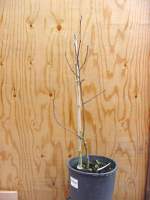
After a year it looked like this. It was almost the same size as a year earlier. It had grown a little and died back several times, and showed no sign of getting any bigger.

The shoots would grow several inches and then the ends would turn black.
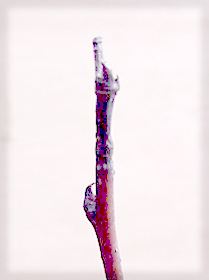
Mel Wilson did a brief internet search and found a possible reason: the stock was quince, which is not the recommended rootstock for Asian Pear. One study in Tehran, Iran, begun in 1997, involved budding nine Asian pear cultivars onto European pear (Pyrus communis) and quince (Cydonia oblonga). Growth was observed until 2002.
All the cultivars showed a good performance on European pear seedling rootstocks although their growth was affected by genotypes. Budded trees on quince failed to grow and showed an incompatibility type response.
There were two obvious things I could try; either get some common pear rootstocks, or try interscion grafting. To avoid further delay and scion deterioration (quince stocks had already arrived, there was a comice pear tree next door, and Pyrus communis couldn't be delivered for another 3 weeks) I decided to try interscions. The idea is that quince will successfully support comice, and comice, being a typical European pear, should support the Asian Pear.
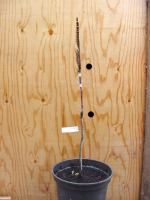
The 'blobs' on the pictures show the location of the lower and upper grafts. The comice interscion is about six inches long.
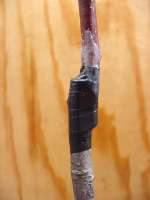 ......
......
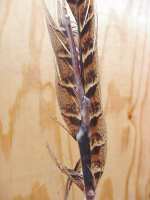
Lower and upper grafts: quince-comice and comice-asian pear. The feather is to discourage birds from settling on the new growth when it occurs. I'll be setting up three of these and reporting on progress later in the year, all being well.
UPDATE, 3 May 2010, 10 weeks after grafting
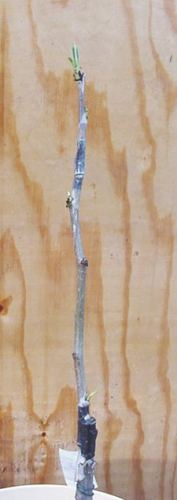 .....
.....
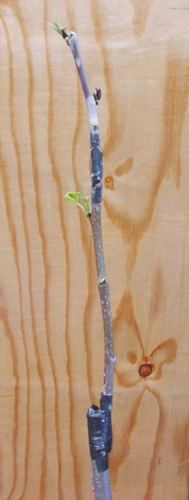 .....
.....
First two trees: leaves on the interscion removed; top growth left alone. Both are growing slowly.
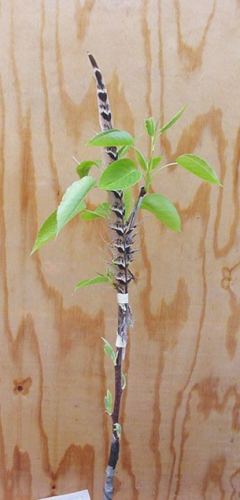 .....
.....
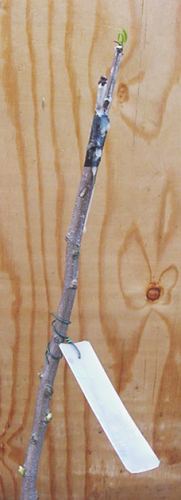 .....
.....
Third tree: I have left the leaves on the interscion. Growth is more rapid. The fourth graft is directly onto Quince C, for comparison.
UPDATE, 28 May 10
There is now a startling difference in the 4 grafts.
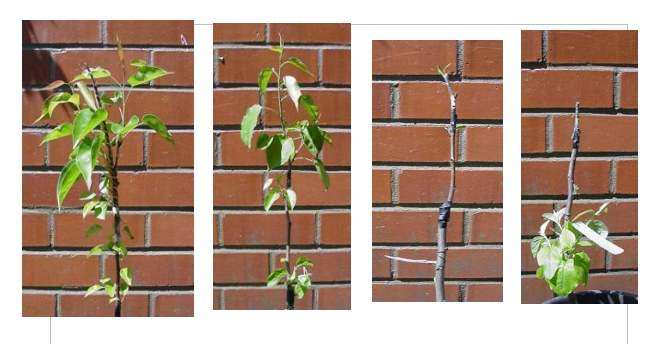
Left to right:
1. Leaves allowed to grow freely on the interscion.
2. Leaves initially removed on interscion, which then re-grew.
3. Leaves initially removed from the interscion; not yet re-grown.
4. Direct graft to Quince C; the scion has died and the rootstock is taking over.
It appears that the more leaves there are on the interscion, the more rapidly the top scion grows. In 3, the scion is alive but barely growing.
UPDATE, Feb 2011
The two trees on the LEFT survived the winter and look OK. The third tree from the left has died.
I am also trying some grafts onto common pear stock this year. One tree done so far.
UPDATE, Jan 2012
After the summer's growth, the leaves on both of the remaining trees looked rather yellow. This may be vitamin deficiency due to scion incompatibility. Growth had also slowed.
The tree I grafted onto common pear stock is doing better; growing more rapidly and the leaves are the correct colour. However it is early days....
UPDATE, Jul 2012
Another of the interscions has died, and the one which is left is looking yellow-leaved and sickly; there are no new leaves. My botanist friend Sally says this is possibly potassium deficiency; the graft union is not letting the correct nutrients through ..... - it seems that the only way to graft this variety is onto common pear, pyrus communis. This tree is doing well; it's now the second year and there is plenty of new growth and all of the leaves are the correct colour.
UPDATE, Jan 2013
The last of the three interscions died in the autumn. The only surviving graft, which looks healthy, is the one onto pyrus communis (seedling pear) rootstock.
Nigel Deacon / Diversity website, with thanks to Derek Tolman and Mel Wilson.